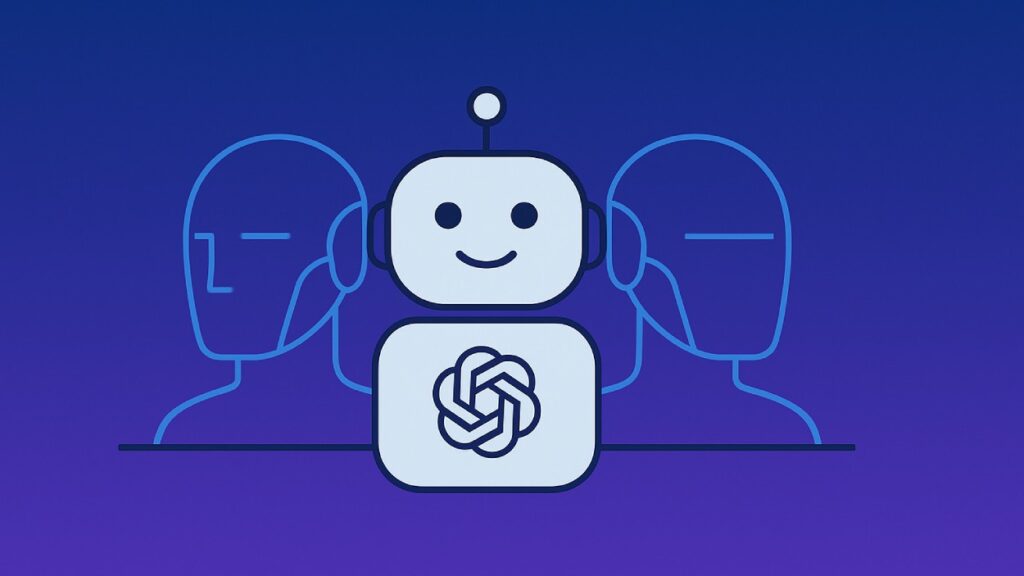OpenAI is quietly rolling out a new system that automatically shifts ChatGPT to a more advanced safety model when it detects emotionally sensitive or potentially harmful conversations.
TLDR:
- OpenAI has introduced a new safety routing system that switches models mid-chat to enhance user protection.
- ChatGPT now defaults to a special GPT-5 safety model when handling sensitive or high-risk topics.
- New parental controls let guardians manage how teens use the chatbot.
- The changes are part of a broader plan to improve ChatGPT’s safety and trustworthiness.
What Happened?
OpenAI began testing its new safety routing system for ChatGPT over the weekend. This system automatically redirects conversations to a safer, more cautious version of the GPT-5 model when it detects emotionally charged or risky content. Alongside this, OpenAI has also rolled out parental controls to help families manage their teenagers’ interactions with the chatbot.
1/ We’ve started testing a new safety routing system in ChatGPT.
— Nick Turley (@nickaturley) September 27, 2025
As we previously mentioned, when conversations touch on sensitive and emotional topics the system may switch mid-chat to a reasoning model or GPT-5 designed to handle these contexts with extra care. This is similar…
How OpenAI’s Safety Routing Works?
The routing system is designed to identify when a conversation becomes emotionally sensitive or involves potentially harmful content. When that happens, ChatGPT quietly shifts from GPT-4o to a GPT-5-based model trained with enhanced safety protocols, often labeled internally as “gpt-5-chat-safety.”
- This switch happens on a per-message basis and is temporary.
- The active model can be revealed if a user directly asks ChatGPT.
- The goal is to improve response safety rather than block or shut down conversations altogether.
Nick Turley, VP and head of the ChatGPT app, confirmed the update on X (formerly Twitter), writing, “Routing happens on a per-message basis; switching from the default model happens on a temporary basis. ChatGPT will tell you which model is active when asked.”
This marks a clear shift from GPT-4o’s default behavior, which was designed to be fast and agreeable. While users appreciated its speed and responsiveness, some experts have criticized GPT-4o’s tendency to validate user beliefs without sufficient caution, especially in delicate conversations.
Parental Controls Aim to Make ChatGPT Teen-Safe
The new parental controls give parents more tools to shape how their teens use ChatGPT. OpenAI is introducing several customization options for teen accounts, including:
- Quiet hours to limit when the app can be used.
- Ability to turn off voice mode, memory, and image generation.
- Option to opt out of model training.
- Reduced exposure to graphic content or unrealistic beauty ideals.
In addition, OpenAI has built a detection system for potential self-harm indicators. If signs of distress are detected, a specially trained human team will review the situation.
- If needed, parents will be notified via email, text, or push alert (unless they’ve opted out).
- OpenAI is also exploring how to notify law enforcement or emergency services when urgent help is needed and parents can’t be reached.
OpenAI acknowledged the system’s limitations, stating, “It won’t be perfect and may sometimes raise alarms when there isn’t real danger, but we think it’s better to act and alert a parent so they can step in than to stay silent.”
What TechKV Thinks?
I think OpenAI is taking a bold and necessary step here. Routing conversations to a safer model may feel intrusive to some users, but in high-risk scenarios, this could literally be life-saving. It’s clear that OpenAI is trying to balance user freedom with responsibility. And yes, while some users are frustrated that GPT-4o isn’t always the one replying, this layered model-switching approach could become a blueprint for AI ethics in action.
Also, giving parents tools to guide how their teens use ChatGPT is long overdue. Teenagers are using AI more than ever, and we cannot afford to leave their mental health to chance. If the system prevents even one tragedy, it’s worth it.
